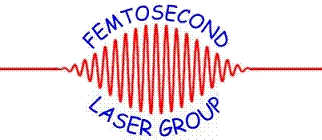Department of Physics and Astronomy: Publications and Other Research

C.J.G.J. Uiterwaal Publications
Document Type
Article
Date of this Version
May 1995
Abstract
For the two reactive systems, NH3+(Eint)+N H3→NH4++NH2 and H2+ (Eint)+H2→H3+ + H, for which the relative cross sections were measured earlier in our group for Ec.m.≈40 meV we calculated the relative cross section as a function of internal energy using the statistical Rice– Ramsperger–Kassel–Marcus (RRKM) theory that implicitly conserves total energy and total angular momentum. We found satisfactory agreement between theory and experiment by imposing rather mild constraints upon the loose transition state configuration. These constraints involve inactive vibrations and steric hindrance. The steric hindrance imposed in case of the (NH3– NH3)+ system is interpreted as being due to the anisotropic interaction of the ionic charge with the permanent electric dipole of the respective neutral collision partner in the two dissociation channels. We cannot be absolutely sure that the specific combination of modifications we propose for each of the two systems is the only one that agrees well with experiment. However, we find it striking that an agreement can be obtained by such weak and physically meaningful modifications, and we take this as a strong indication that the two studied systems do behave statistical.


Comments
Published by American Institute of Physics. J. Chem. Physics102 (20), 22 May 1995. ©1995 American Institute of Physics. Permission to use.